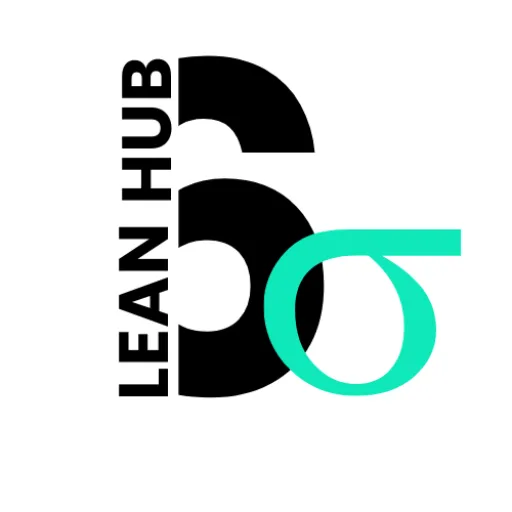Eliminating Waste: The Key to Optimising Processes and Adding Value
In our journey toward operational excellence, we must first grasp the profound impact that waste has on our processes. Waste, in its various forms, can significantly hinder productivity, inflate costs, and diminish the quality of our outputs. When we allow waste to proliferate within our systems, we not only compromise efficiency but also risk losing our competitive edge in the marketplace.
By recognizing the detrimental effects of waste, we can begin to cultivate a culture of continuous improvement that prioritizes efficiency and value creation. Moreover, understanding waste is not merely about identifying what is inefficient; it is about comprehending how these inefficiencies ripple through our entire organization. For instance, excess inventory can lead to increased holding costs and potential obsolescence, while unnecessary motion can result in wasted time and energy.
As we delve deeper into the intricacies of our processes, we uncover the interconnectedness of various waste types and their cumulative impact on our overall performance. This holistic understanding empowers us to take informed actions that can lead to significant enhancements in our operational workflows.
Key Takeaways
- Waste can have a significant impact on processes, leading to inefficiencies and increased costs.
- Different types of waste in a process include overproduction, waiting, unnecessary transportation, over-processing, excess inventory, motion, and defects.
- Implementing lean principles such as 5S, value stream mapping, and continuous improvement can help minimize waste in processes.
- Technology can be utilized to streamline processes and reduce waste through automation, data analysis, and real-time monitoring.
- Engaging employees in waste elimination efforts through training, empowerment, and recognition can lead to sustainable improvements.
Identifying Different Types of Waste in a Process
To effectively tackle waste, we must first identify the different types that exist within our processes. Lean methodology categorizes waste into several distinct types, including overproduction, waiting, transportation, extra processing, inventory, motion, and defects. Each type presents unique challenges and opportunities for improvement.
By systematically analyzing our workflows, we can pinpoint where these wastes occur and how they affect our overall efficiency. For instance, overproduction occurs when we produce more than what is needed, leading to excess inventory that ties up resources and space. Waiting time can manifest when employees or machines are idle due to delays in the process, which not only wastes time but also diminishes morale.
Transportation waste arises from unnecessary movement of materials or information, which can be minimized through better layout and process design. By engaging in a thorough examination of our processes, we can create a comprehensive map of waste types that will guide our efforts in streamlining operations.
Implementing Lean Principles to Minimize Waste
Once we have identified the various types of waste present in our processes, the next step is to implement lean principles aimed at minimizing these inefficiencies. Lean thinking encourages us to focus on value creation while eliminating anything that does not add value to our customers. This philosophy can be applied through various tools and techniques such as value stream mapping, 5S methodology, and Kaizen events.
Value stream mapping allows us to visualize the flow of materials and information through our processes, helping us identify bottlenecks and areas for improvement. The 5S methodology—Sort, Set in order, Shine, Standardize, and Sustain—provides a framework for organizing our workspace to enhance efficiency and reduce waste. Additionally, Kaizen events foster a culture of continuous improvement by encouraging team members to collaborate on identifying problems and implementing solutions.
By embracing these lean principles, we can create a more agile and responsive organization that is better equipped to meet the demands of our customers.
Utilizing Technology to Streamline Processes and Reduce Waste
| Technology | Impact |
|---|---|
| Automation software | Reduced manual data entry by 60% |
| Inventory management system | Decreased excess inventory by 40% |
| Supply chain optimization tools | Reduced transportation costs by 20% |
| Energy monitoring system | Lowered energy consumption by 15% |
In today’s digital age, technology plays a pivotal role in streamlining processes and reducing waste. We have access to an array of tools and software that can enhance our operational efficiency by automating repetitive tasks, improving communication, and providing real-time data analytics. By leveraging technology effectively, we can minimize human error and optimize resource allocation.
For example, implementing an enterprise resource planning (ERP) system can provide us with a centralized platform for managing inventory, production schedules, and customer orders. This integration allows for better visibility across departments and facilitates informed decision-making. Additionally, utilizing data analytics tools enables us to track key performance indicators (KPIs) related to waste reduction efforts, allowing us to make data-driven adjustments to our processes.
As we embrace technological advancements, we position ourselves to not only reduce waste but also enhance overall productivity.
Engaging Employees in Waste Elimination Efforts
One of the most critical components of successful waste elimination is engaging employees at all levels of the organization. When we involve our team members in identifying and addressing waste, we foster a sense of ownership and accountability that drives meaningful change. Employees often possess valuable insights into the challenges they face daily; by tapping into their knowledge and experience, we can uncover innovative solutions to reduce waste.
Creating a culture of open communication is essential for encouraging employee participation in waste reduction initiatives. We can establish regular brainstorming sessions or workshops where team members can share their ideas and experiences related to waste in their respective areas. Additionally, recognizing and rewarding contributions to waste elimination efforts can motivate employees to remain actively engaged in continuous improvement initiatives.
By empowering our workforce to take an active role in this process, we cultivate a collaborative environment that enhances both morale and productivity.
Monitoring and Measuring Progress in Waste Reduction
As we embark on our journey toward waste reduction, it is crucial that we establish mechanisms for monitoring and measuring our progress. Without clear metrics in place, it becomes challenging to assess the effectiveness of our initiatives or identify areas that require further attention. By defining key performance indicators (KPIs) related to waste reduction—such as cycle time, defect rates, or inventory turnover—we can create a framework for evaluating our success.
Regularly reviewing these metrics allows us to track improvements over time and make data-driven decisions about where to focus our efforts next. Additionally, conducting periodic audits of our processes can help us identify any lingering inefficiencies or new sources of waste that may have emerged. By maintaining a vigilant approach to monitoring progress, we ensure that our commitment to waste reduction remains a priority within our organization.
Integrating Sustainability Practices to Minimize Environmental Waste
In addition to focusing on operational efficiency, we must also consider the environmental impact of our processes. Integrating sustainability practices into our waste reduction efforts not only benefits the planet but also enhances our brand reputation and aligns with consumer expectations for corporate responsibility. By adopting eco-friendly practices such as reducing energy consumption, minimizing packaging waste, and recycling materials, we can contribute positively to the environment while simultaneously reducing costs.
For instance, implementing energy-efficient technologies or practices can lead to significant reductions in utility expenses while lowering our carbon footprint.
Additionally, exploring alternative materials or packaging solutions can help us minimize waste generated during production and distribution.
By prioritizing sustainability alongside operational efficiency, we position ourselves as leaders in responsible business practices while also appealing to environmentally conscious consumers.
Celebrating Successes and Continuously Improving Processes
Finally, as we make strides in reducing waste within our processes, it is essential that we take the time to celebrate our successes. Acknowledging achievements—whether big or small—reinforces the importance of our waste reduction efforts and motivates us to continue striving for excellence. Celebrations can take many forms, from team recognition events to sharing success stories across the organization.
However, celebrating success should not mark the end of our journey; rather, it should serve as a catalyst for continuous improvement. We must remain committed to evaluating our processes regularly and seeking new opportunities for enhancement. By fostering a culture of innovation and adaptability, we ensure that our organization remains agile in the face of changing market demands while consistently delivering value to our customers.
In conclusion, understanding the impact of waste on processes is just the beginning of a transformative journey toward operational excellence. By identifying different types of waste, implementing lean principles, utilizing technology, engaging employees, monitoring progress, integrating sustainability practices, and celebrating successes, we create a robust framework for minimizing waste within our organization.
As we continue this journey together, we empower ourselves to achieve greater efficiency and effectiveness while contributing positively to both our bottom line and the environment.
FAQs
What is waste (Muda) in the context of business processes?
Waste, or Muda, refers to anything that does not add value to the customer in a business process. This can include activities, resources, or time that are not necessary for creating a product or providing a service.
What are the 8 Wastes in the context of Lean methodology?
The 8 Wastes, also known as the 8 forms of Muda, are Defects, Overproduction, Waiting, Non-utilised Talent, Transportation, Inventory, Motion, and Extra-processing. These are the key areas where waste can occur in a business process.
What is the mindset behind focusing on identifying and eliminating waste in business processes?
The mindset of identifying and eliminating waste is to optimise processes and improve efficiency. By eliminating waste, businesses can reduce costs, improve quality, and enhance customer satisfaction.
How does the focus on waste tie into Lean methodology?
The focus on waste is a fundamental principle of Lean methodology, which aims to maximise customer value while minimising waste. By identifying and eliminating waste, Lean organisations can streamline processes and improve overall performance.
How can businesses identify and eliminate waste in their processes?
Businesses can identify and eliminate waste by conducting thorough process analysis, engaging employees in continuous improvement efforts, and implementing Lean tools and techniques such as value stream mapping, 5S, and Kaizen events.
What are some examples of waste in a business process?
Examples of waste in a business process include rework due to defects, producing more inventory than needed, waiting for materials or information, underutilising employee skills, unnecessary transportation of goods, and excessive motion or movement.
What are the potential benefits of eliminating waste in business processes?
The potential benefits of eliminating waste include cost savings, improved quality, faster lead times, increased productivity, better employee morale, and enhanced customer satisfaction.






